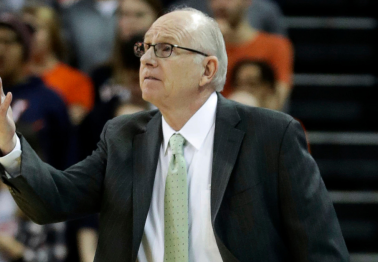With their worst season in over a decade, the Miami Hurricanes men's basketball team struggled throughout the entire season for multiple reasons. Many of those struggles stemmed from the loss of two post players, which ultimately kept the 'Canes from a fourth-straight NCAA Tournament appearance.
Miami finished with a 14-18 overall record, the first time the Hurricanes finished the season with a losing record since the 2006-07 campaign. Their 5-13 ACC finish is the worst under Jim Larrañaga, and 2009-10 the last time they finished with a worse record at 4-12.
RELATED: Miami's Top-10 Scorers of All Time Torched the Nets Like Nobody's Business
With as many things as this team had going for it, Miami had some issues that led to such a down year for a program that has become a contender in the ACC. And not all of it can be blamed on the NCAA being unfair toward Dewan Hernandez.
But what are some of the reasons this team struggled to not only win conference games, but out of conference as well?
1. Only 7 Players
For most of the season, Larrañaga only played seven players in his rotation. Chris Lykes, Zach Johnson, DJ Vasiljevic, Anthony Lawrence, Sam Waardenburg, and Ebuka Izundu each played in all 32 games. Deng Gak played in eight games before a season-ending injury took him out of the lineup. He averaged 14.6 minutes in those eight games. Freshman Anthony Mack played in 28 games and played 15.4 minutes per game.
Dewan Hernandez would have been one of the top players on this team — the top post player who helped on defense and rebounding. With him being out due to NCAA infractions, that took away a lot from this team. It was made even worse when Gak was injured early in the season. So the team only had Izundu and Waardenburg left as big men with Lawrence needing to play at power forward again.
With Izundu averaging 27.6 minutes per game, that was over 12 minutes of game time that the Hurricanes didn't have a true big man who could protect the rim or play inside since Waardenburg is a stretch-big.
With almost no depth on the team, it led to so many problems. Those problems surfaced late in games when all seven players had been counted on to play 25 or more minutes. Miami had nine games this season that were decided by six points or less. In those nine games, they had a record of 2-7. A short rotation had to play a part in that down the stretch of games.
2. Inconsistent Rebounding
This is another problem that stemmed from the loss of Hernandez and Gak. With Izundu as the only inside presence, it was easy for teams to take advantage of the Canes on the glass. Waardenburg and Lawrence are solid rebounders, but if matched up with bigger players, they rarely stood a chance.
On the season, Miami lost on the glass 1,158 to 1,061. In conference games, they lost 669 to 575. A perfect example is the last game of the season against Virginia Tech in the ACC Tournament. Izundu picked up two fouls early, so there was no inside presence to protect the rim and the best rebounder on the team was sitting on the bench. The Hokies out-rebounded the Hurricanes 18-12 in the first half and took a 17-point lead to the break. They were also deadly from the field, shooting 53.8 percent from the field while Miami only made 33.3 percent of their shots.
3. The Canes Got Outgunned
On the season, the Hurricanes shot 43.5 percent from the field and made 33.3 percent from 3-point range. Their opponents were better in both, hitting 45.1 percent from the field and 34.9 from three.
That isn't a huge difference in percent, but when there are games that come down to a few shots, and the other teams are making an extra shot or two, it completely changes games and the season. But the big difference was the shooting percentages during ACC play.
Against ACC opponents, the Canes shot 41.5 percent from the field and 31.7 from three. Their opponents shot 45.8 from the field and 36.8 from three. It is tough to win games in the ACC when other teams are shooting better. It isn't a surprise that they shot worse and allowed better shooting when playing conference opponents, but it still shows how they were consistently out-shot all season.
4. Streaky Offense
Even with how good Chris Lykes was throughout the season, he could go on stretches where he would struggle just like he would have stretches where he was unstoppable. And at 16.2 points per game — the highest scoring average since Sheldon McClellan during the 2015-16 season — he was the top option on offense. However, he didn't have a good shooting season. And since he was the top option and taking a bulk of the shots, if he shot poorly, the offense would struggle.
On the season, Lykes made 40.7 percent of his shots and 31.8 percent from 3-point range. For the player who took 95 more shots on the season than anyone else on the team, those aren't too great of numbers. Zach Johnson can be added to this as well.
Johnson was second on the team in field goal attempts and shot just 39.1 percent from the field. With the top-two shot creators on the team at 40 percent, the offense isn't exactly smooth and efficient.

